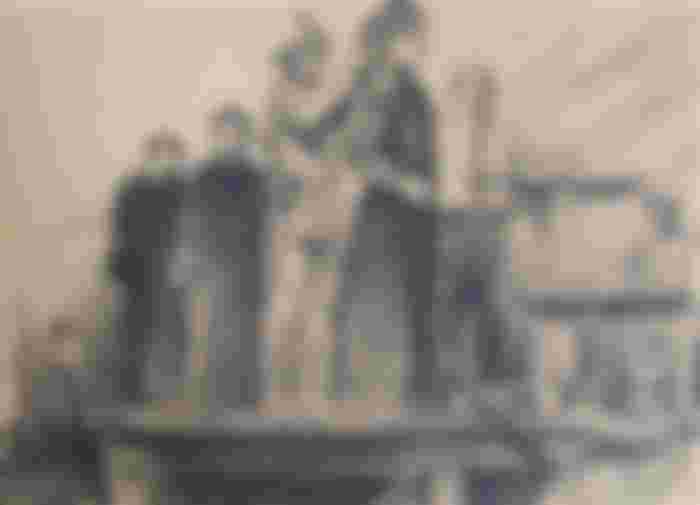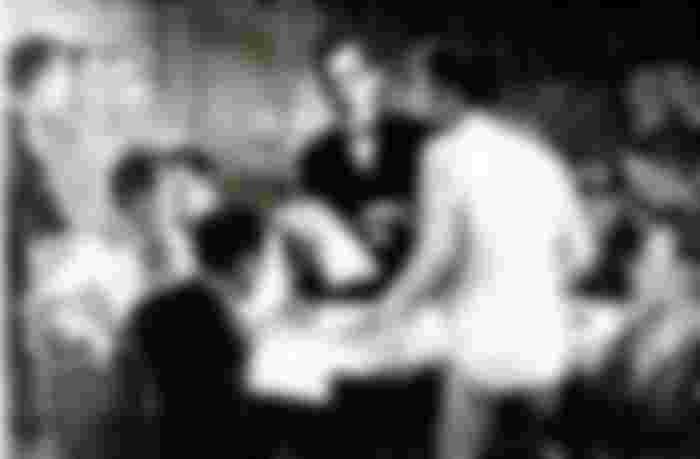Spain ruled the Philippines for over 3 centuries, from 3 expeditions until our ancestors were baptized in Christianity, but many Muslims including Sultan Kudarat hindered & resisted converting to the new religion at that time. With countless revolts, many of them were short-lived, one lasted for many years just to be free against the oppression of the Spaniards.
The Aftermath of 1872's Cavite Mutiny

Well-known Ilustrados, businessmen, and noblemen were arrested after the failed mutiny and only the last mutiny during the Spanish colonial government. Their sentence was changed, and originally they were to be executed, but instead, they were sent in exile in other colonies controlled by the Spaniards except for the Filipino Martyrs: Gomez, Burgos, and Zamora.
Also known as Gomburza. They were pinpointed by the Spanish government that they were the masterminds of the mutiny, but the priests confessed they don't have any connections with the mutiny of January 20, 1872, since the priests well knew each other the moment they become servants of Catholicism until they were sent to trial, and bribed a witness testifying their participation in the mutiny.
As the military tribunal sentenced them to death, on February 17, 1872, the Gomburza were publicly executed by garotte in Bagumbayan (now Luneta Park), Manila. Paciano Rizal and his younger brother Jose who would become the nation's hero witnessed their execution as they made a vow to avenge their deaths.
Rizal's Voyage in Europe
After finishing his studies in two of the most prestigious universities in the country: Ateneo Municipal de Manila (now Ateneo de Manila University) & the University of Santo Tomas, Jose traveled alone to Madrid in 1882. Supported by his older brother Paciano without his parent's knowledge and consent as he studied at Universidad Central de Madrid.
Rizal earned a Licentiate in Medicine then attended lectures at the University of Paris and the University of Heidelberg. Before moving on January 2, 1884, a reunion of Filipinos was held at the house of Pedro Paterno in Madrid. Jose proposed to create a novel and was agreed with one accord by all men present, but it didn't push through.
The following men who agreed to help Rizal were: Maximo Viola, Antonio & Pedro Paterno, Graciano Lopez Jaena, Evaristo Aguirre, Eduardo de Lete, Julio Llorente, and Valentin Ventura. They didn't write anything and the initial plan was to cover and describe all phases of Filipino life, almost everyone around wanted to write about women.
Jose saw his companions spend more time gambling & flirting with women. So he made a different plan. Instead of collaborating with other writers, he decided to write the first drafts of the novel alone. At Heidelberg, Jose completed ophthalmology in 1887 under the tutelage of Otto Becker. In that same year, he finished his first novel.
Jose feared that his book may not be printed, and it would remain unread. He was struggling at that time on how he'll publish his book until Maximo Viola stepped in for financial aid. Jose was hesitant, but Maximo insisted and he lent Jose P300 for 2,000 copies. Hence, Noli Me Tangere (Touch Me Not) is now ready for distribution.

The title came from the Gospel of John, and its premise is set in our country during the Spanish colonial period as it features aristocracy behind poverty and abuse of the Spaniards. It became an influence on Filipino nationalism until the book was banned by the Spanish authorities, but copies of Noli Me Tangere were smuggled to pass through customs.
One of his closest friends, Ferdinand Blumentritt, has a copy of Noli Me Tangere. After writing his first novel, he joined the propaganda movement La Solidaridad (the Solidarity), formed on December 13, 1888, with its objective to increase awareness of the needs of the country and to propagate a closer relationship between the 2 countries.
Jose used 3 different pen names: Dimasalang, Laong Laan, and May Pagasa. Most of his writings center on liberal and progressive ideas of individual rights and freedom for the Filipino people. After leaving the group, he continued to write his second novel before returning to the Philippines. El Filibusterismo (The Reign of Greed) was published in 1891 to commemorate the martyrdom of the Filipino Priests of 1872.

"To the memory of the priests, Don Mariano Gomez, Don Jose Burgos, and Don Jacinto Zamora. The church, by refusing to degrade you, has placed in doubt the crime that has been imputed to you; the government, by surrounding your trials with mystery and shadows causes the belief that there was some error, committed in fatal moments; and all the Philippines, by worshiping your memory and calling you martyrs, in no sense recognizes your capability. In so far, therefore, as your complicity in the Cavite Mutiny is not clearly proved, as you may or may not have been patriots, and as you may or may not cherish sentiments for justice and for liberty, I have the right to dedicate my work to you as victims of the evil which I undertake in combat."
Just like in Noli Me Tangere, this is a continuation of Rizal's first novel where the main character returns as a disguised persona, but it has dark elements as he tried to attempt the country's issues by reforms which made no effect and seemed impossible with the corrupt attitude of the Spanish. Now, he'll try to resolve the country's system through violent means.
Same thing as goes for his 1st book, El Fili was banned in the Philippines because of the colonial government's portrayal of abuses and corruption. Both of his novels became the inspiration to start the revolution against our colonial masters at that time.
A year later, an anti-Spanish colonialism secret group with its primary goal was to be independent from Spain through a revolution. Ang Kataastaasan, Kagalanggalang Katipunan ng mga Anak ng Bayan (simply known as Katipunan / the Supreme and Venerable Association of the Children of the Nation) was formed in 1892.
The Katipunan

It is said that the group's foundation was in January 1892, or on July 7, 1892 - the day when Rizal was arrested after organizing La Liga Filipina (The Philippine League). The group was influenced by Masonic rites and its members were subjected to not tell the truth to the outside world and expected to abide by the rules established by the society.
Founded by Andres Bonifacio, Teodoro Plata, and Ladislao Diwa. Men were only allowed to join the group, later, women were accepted into the society. Any person who wished to join the group needs to pass initiation rites similar to the Freemasons, by testing their courage, patriotism, and loyalty.
Jose's Return to Manila & Exile in Dapitan

He returned to Manila in 1892 as he went to Ilaya Street, Tondo, to create a civic movement named La Liga Filipina on July 3, 1872. Similar to La Solidaridad, its purpose was to build a new group that sought to involve the people in the reform movement. The moment he returned to the country, he was declared as an enemy of the state, as Spanish authorities arrested Jose.
It became inactive after Jose's arrest, but it was reorganized and La Liga Filipina was split into 2 groups, the Katipunan, and the Cuerpo de Compromisarios (Corps of Compromisaries) - this group aims to continue supporting La Solidaridad through peaceful means, while the Katipunan continues to lurk in the shadows of the colonial government.
Jose spent his later years as he was sentenced in exile at Dapitan, Zamboanga. Andres contacted Jose for his full support of the group. That happened on May 4, 1896, Andres and his councilors decided to seek advice for Jose's decision of the revolt.
Dr. Pio Valenzuela was sent on behalf of the Katipunan. To cover their tracks, Pio accompanied a blind man named Raymundo Mata since Jose is an ophthalmologist and they arrived in Dapitan on June 21, 1896. Pio told his real purpose, but Jose disagrees with an armed conflict, but rather defend themselves if necessary.
He believed that the people are not ready for a massive revolution, and arms & funds must first be collected before raising the revolution. So with this, Pio made another proposal to Jose: to rescue him. He disapproves of this plan because Jose gave his word of honor to the Spaniards, and he didn't want to break it.
He recommended Pio to seek help from wealthy noblemen to gather funds, and create an elite army which will be led by Antonio Luna to be the group's war general in case a revolution breaks out. Pio returned to Manila and informed that he failed in seeking Jose's support for the Katipunan.
Since Jose denied his support, the Katipunan was trying to address its arms supply problem and had taken steps to seek aid for weapons abroad.




